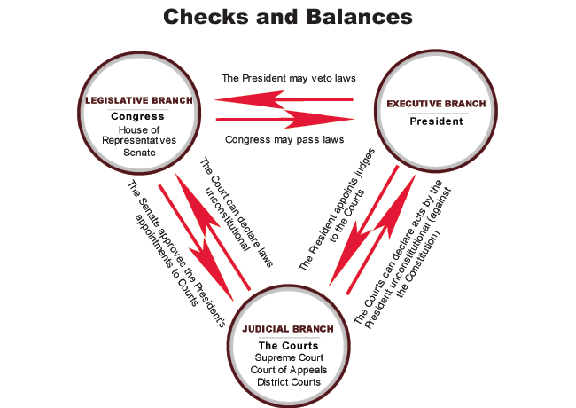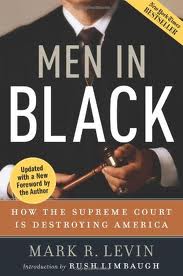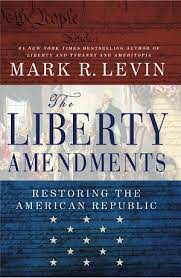When the Constitution was written, the Founders were conscious of the danger of power. To prevent any one man or group from becoming tyrannical, they set in place a system of government that divided power among three branches.
The Legislative branch, or congress, was given the power to legislate and create laws. They were also given the power of the purse, the ability to advise the executive branch and the consent of Executive appointees and judicial nominees. They were also given the powers of approving treaties and impeachment.
The Executive, or the President, was discharged with enforcing the law, but was also given the power to veto legislation and appoint federal and Supreme Court justices.
The Judicial branch, or the courts, were given the power to adjudicate the laws of the land. To a conservative, this is understood through the ideas of “Originalism” and “Judicial Restraint.” Judges should base their decisions on the actual text of the Constitution and intent of the law. Judges should err on the side of restraint and defer to the people’s elected representatives when presented with issues not addressed in current law.
Judicial Restraint is a theory of judicial interpretation that encourages judges to limit the exercise of their own power. It asserts that judges should hesitate to strike down laws unless they are obviously unconstitutional. In deciding questions of constitutional law, judicially-restrained jurists go to great lengths to defer to the legislature.
This would change in 1803 when the Marbury vs. Madison decision set a new precedent for Judicial Review. With this decision, the Supreme Court gave itself the power to review the constitutionality of laws. Levin states that a conservative is an Originalist, “for he believes that much like a contract, the Constitution sets forth certain terms and conditions for governing that hold the same meaning today as they did yesterday and should tomorrow. It connects with one generation to the next…If the Constitution’s meaning can be erased or rewritten, and the Framers’ intentions ignored, it ceases to be a constitution but is instead a concoction of political expedients that serve temporary policy agendas” of the people presently in power.
For some time in our nation’s history, progressive judges and justices have been using this tool of Judicial Review to remold the meaning of the Constitution, or what has been called Judicial Activism. Judicial Activism is a political term used to describe judicial rulings that are suspected to be based upon personal and political considerations rather than existing law. This includes adjusting” it to allow for modern or changing views on social issues, such as Roe v. Wade. For those who state that the Constitution is a “living and breathing document,” this gives license to arbitrary and lawless activism.
Detractors of Judicial Activism charge that it usurps the power of the elected branches of government or appointed agencies, damaging the rule of law and democracy. They argue that an unelected judicial branch has no legitimate grounds to overrule policy choices of duly elected or appointed representatives, in the absence of a real conflict with the constitution. Neither democracy nor the rule of law can exist when the law is merely what judges presently say it should be.










